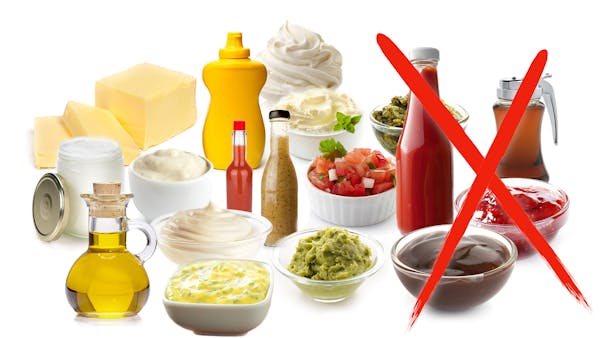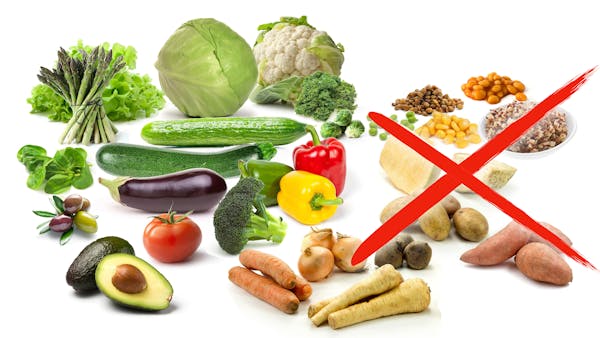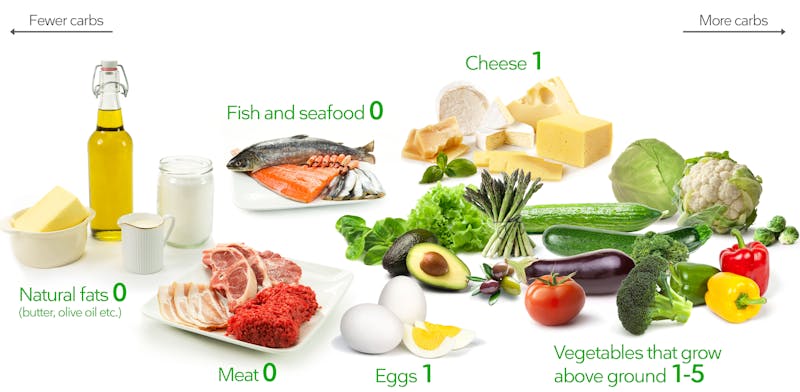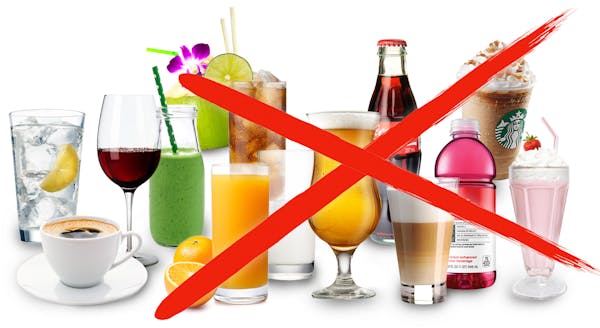Classical Education...
“Because the classical educator believes in a real world that gives up ordered knowledge of itself, he teaches the student how to get that knowledge. The seven liberal arts were quite deliberately developed for precisely that reason. Believing that we can know truth, and believing that truth sets us free, classical educators spent thousands of years refining the tools of truth-seeking that were used from the beginning of time, but were first codified by Aristotle."
- Andrew Kern, in "What is the Difference Between Classical and Conventional Education”
Translate
Friday, December 4, 2020
Wednesday, November 4, 2020
The Astounding Physics of N95 Masks
How do Face Masks and Respirators Work? | Risk Bites | Andrew Maynard
Tuesday, November 3, 2020
Here's what it looks like when you cough in a grocery store
SEE IT: Simulation shows how cough can spread coronavirus in grocery stores (April 2020)
Riskiest Places During the Pandemic
How dangerous is the air around us? | COVID-19 Special
New findings warn of higher risk in airborne coronavirus transmissions | COVID-19 Special (August 21, 2020)
Black Light Experiment Shows How Quickly COVID-19 Can Spread | NowThis
Coronavirus: New Facts about Infection Mechanisms - NHK Documentary
Office Sneeze | Examining the Spread of COVID 19 from Person-To-Person in an air-conditioned environment
Sneeze travels much farther than you might expect
The INCREDIBLE Sneeze
PUBLISHED
FOR ANYONE WHO grows anxious at the sound of a sneeze or a cough these days, Lydia Bourouiba’s research offers little comfort. Keep Reading HERE.
Why to Avoid the Dentist (Unless its an Emergency) During COVID
Abstract
Background
Among several potential transmission sources in the spreading of the COVID-19, dental services have received a high volume of attention. Several reports, papers, guidelines, and suggestions have been released on how this infection could be transmitted through dental services and what should be done. This study aimed to review the guidelines in order to develop a practical feasibility protocol for the re-opening of dental clinics and the reorientation of dental services.
Methods
This study systematically reviewed the published literature and the guidelines of international health care institutions on dentistry and COVID-19. We searched Pubmed, Web of Science, and SCOPUS electronic databases using MESH terms. The recommendations identified were tested with a convenience sample of experienced practitioners, and a practical step-by-step protocol is presented in this paper.
Results
To the date this paper was drafted, 38 articles were found, of which 9 satisfied our inclusion criteria. As all the nine studies were proposed in a general consensus, any elective non-emergency dental care for patients with suspected or known COVID-19 should be postponed for at least 2 weeks during the COVID-19 pandemic. Only urgent treatment of dental diseases can be performed during the COVID-19 outbreak taking into consideration pharmacological management as the first line and contagion-reduced minimally invasive emergency treatment as the secondary and final management.
Conclusions
While the currently available evidence has not demonstrated a clear and direct relationship between dental treatment or surgery and the possibility of the transmission of COVID-19, there is clearly the potential for transmission. Therefore, following the protective protocols in the COVID-19 crisis is of utmost importance in a dental setting.
| AMA | Banakar M, Bagheri Lankarani K, Jafarpour D, Moayedi S, Banakar MH, MohammadSadeghi A. COVID-19 transmission risk and protective protocols in dentistry: a systematic review. BMC Oral Health. 2020;20(1):275. Published 2020 Oct 8. doi:10.1186/s12903-020-01270-9 |
|---|---|
| MLA | Banakar, Morteza et al. “COVID-19 transmission risk and protective protocols in dentistry: a systematic review.” BMC oral health vol. 20,1 275. 8 Oct. 2020, doi:10.1186/s12903-020-01270-9 |
| APA | Banakar, M., Bagheri Lankarani, K., Jafarpour, D., Moayedi, S., Banakar, M. H., & MohammadSadeghi, A. (2020). COVID-19 transmission risk and protective protocols in dentistry: a systematic review. BMC oral health, 20(1), 275. https://doi.org/10.1186/s12903-020-01270-9 |
| NLM | Banakar M, Bagheri Lankarani K, Jafarpour D, Moayedi S, Banakar MH, MohammadSadeghi A. COVID-19 transmission risk and protective protocols in dentistry: a systematic review. BMC Oral Health. 2020 Oct 8;20(1):275. doi: 10.1186/s12903-020-01270-9. PMID: 33032593; PMCID: PMC7543039. |
Reasons to avoid public restrooms during COVID pandemic
by Chris Melore
NEW YORK — If you’ve ever been struck by a water droplet after flushing the toilet, it can certainly gross you out. Now imagine that feeling multiplied by a thousand! New images of what’s really happening when you flush the toilet is giving nearly everyone in a survey incentive to close the lid...
Particles coming from a urinal flush “manifests an external spread type, with more than 57% of the particles traveling away from the urinal,” according to that study’s author. The spray hits urinal users in the thigh in just 5.5 seconds, that study shows. Spray from a normal toilet reaches higher than the thigh, but it takes about 35 seconds to hit a person.
A similar study also warns that toilets could even spread the coronavirus since research shows the virus is found in human waste. For the study, researchers created computational models to track the spread of aerosols. The model shows that the droplets fly about three feet above the bowl, and they can stay in the air for about a minute since they are so small.
This is a condensed version of the article. To read the full article, click HERE.
Personal Note: Some commenters on the original article page are claiming
these images and statistics are made-up.
However, let’s be honest…we’ve all flushed with the lid of the toilet
bowl up and we have at some point felt water splatter hit our pants. Therefore, logic insists that there is truth
to this article and its statistics.
In
your own home, everyone who lives there shares the same germs anyway, and so
mask-wearing and lid closing are not as serious an issue within your own home
with familiar occupants. The issue grows when you are using a public restroom,
though.
Solution…simply close the lid on the toilet bowl. If there is no toilet seat cover in the
public restroom, simply stand back, use your foot to flush the toilet, and you
will cut down on the direct spray. The
thing to keep in mind is that the water droplets containing bacteria and
viruses would go airborne, and so you will need to make sure that you keep your
facemasks on while in public restrooms. Ultimately,
try to go to the restroom before leaving home.
If you must use a public restroom at work or while traveling, simply
take precautions. If you must use a
public restroom, you may want to consider using plastic gloves while in there
to eliminate the need to wash your hands at the public sink. After all, you could be washing your hands,
dry them, and the contaminated water droplets land on your clean hands as you
walk out the door.
Be Logical...This
idea of public restrooms being a concern for health and safety right now is not
illogical. Consider the last place you visited. Were the restrooms
available to the public? They weren’t
for me. I recently visited Dollar Tree. While it has always had public restrooms on-site, since the coronavirus pandemic began, this location has shut down their restroom for public safety. Let’s be
logical. Let’s observe what our
businesses and neighbors are doing. Let’s
make wise decisions for our health. When
I protect you and you protect me, we will get through this health risk quicker.
Tuesday, August 11, 2020
Eating on the KETO Diet
Last year my husband decided to go on a KETO diet. My husband needed to go on a KETO diet to get his bloodwork out of the pre-diabetic range. At first, he was happy, eating as much meat and cheese as he desired...but this bothered me due to his excessive consumption and the lack of balanced meals. However, after his first month on KETO, his numbers had lowered in his bloodwork to make his doctor very happy. By his next blood panel--a few months later--he was no longer pre-diabetic and he was losing a couple pounds. He was still limiting his food supply to the point that I thought he needed more diversity in his diet. That is when I decided to join him on the KETO diet from home.
I have been on a low-carb diet since March 2020. I do not have a real guide or plan besides keeping my carb count below 30grams a day and eating natural fats and clean proteins. I went on it because my doctor said I needed fewer carbs and because I cannot lose weight without drastically feeling like I'm starving. So, off we went on this journey together. Our children are--obviously--not on the KETO diet. They have their weight in check, and they are not exhibiting any health issues that would require KETO modifications; however, I am the chef in the family...it is my job to buy, thaw, and prepare our daily meals. Therefore, I knew that if Mom and Dad were on KETO then there would have to be modified food options for our kids to eat. We buy SlimFast KETO meal bars and shakes to help us keep our carbs low, and when we have these, our kids get to have granola bars or fruit smoothies. We are still eating about the same things in our home, but my husband and I go the low-carb way while the kids eat healthy but carb-filled alternatives.
After the first month, there was a noticeable difference in how "puffy" I was, but I did not really lose any weight. It is now August 2020, and I have not lost anything beyond the initial water weight and puffiness. My husband has tried to convince me to lower my calorie intake--after all, we are eating a protein and fat diet mostly--but this is often hard to do. Since my hunger-pangs have changed since starting the diet. However, one benefit of KETO is that I do not feel like I am starving all of the time. Previously, on a standard diet, I was hungry all of the time, and so I would feel the need to snack and eat throughout the day. Now, I go from not being hungry to "Oh no! Where is a cheese stick?" It creeps up on me and then all of a sudden my hunger is there. This is not so bad if we are at home (which we mostly are right now due to Corona Virus) since we do keep plenty of string cheese and sliced meats in the house to snack on between meals...however, I still feel as if I need more veggies in my diet so that I am filling up on nutrients as well as energy-producing proteins and fats.
Low-carb veggies are hard to find. Furthermore, when you do find a low-carb veggie, it is often one that you would not normally eat every day such as cauliflower or zucchini. We have tried incorporating pre-packaged salads (from Walmart) into our daily routine to help give us more balance. We typically get the Family Sized Caesar Salad mix and let the kids have the croutons to add to their bowls of the salad. However, we miss pizza and pasta...and the cauliflower pizza crust is NOT worth it. Trust me. We've tried 4 different recipes to try to revive pizza in our house for the KETO dieters, but it is simply repulsive at times.
With my birthday coming up, my husband began looking into Vasta...
Look at the recipe below to see why this product looks so amazing to someone stuck on KETO, not losing weight, and bored with regular food options...
Visit my next post to learn about our first time with Vasta.
My Start on KETO...
Last year (2019) my husband decided to go on a KETO diet.
I have been on a low-carb diet since March 2020. I do not have a real guide or plan besides keeping my carb count below 30grams a day, eliminating wheat products, and eating natural fats and clean proteins.
All I knew about KETO was HIGH Fat, MODERATE Protein, and LOW Carbs. It was quite a change to start counting carbs in everything. At first, you think, "OK...I'm cutting out bread..." but it is more than that. There are carbs in EVERYTHING, and if you are trying to stay below 30grams of carbs a day, you have to adjust more than just your bread/pasta consumption.
There are some great books to read and websites for advice...but I'm a homeschool mom of two high schoolers, I work part-time, and have regular Mom, Wife, and HomeOwners duties to fit into my waking hours, and so I have not read as much as I should at this point; however, I do understand the basics of the dietic restrictions to help with diabetic issues that start to show in the blood in obese individuals.
There are 3 or 4 really good apps you can download as well to help keep you low in carbs throughout the day. I started the KETO diet trying to use one, but again, I found that I did not have the time to keep up with it for more than a week. If you are more committed than me, you will want to go to your phone's app store and review the KETO apps available to you. You might find them helpful.
However, to begin, knowing what will be the bulk of your diet is key in getting started. When my husband began his KETO Diet, he ate eggs, bacon, lunch meat, cheese sticks, coffee (with creamer and stevia), and whipped cream. That was all he wanted to bother with. I found it very upsetting to watch this--remember, I did not start my KETO journey until 6 months after him--and I desperately tried to get him to eat greens. I understood cutting out bread and pasta, but having veggies in his diet seemed like an obvious positive. He didn't want to do this. He said it would get too hard to count the carb content in the veggies. Now that I'm on the KETO Diet, I have to agree, it is easy to go over your 30grams of carbs a day when you begin adding in veggies; however, those vitamins and minerals are good for you, and so I really encourage anyone on KETO to try to include more than just meat, cheese, and dairy products in their meals.
Below you can find content from a website called Diet Doctor. They provide a clear listing of what to eat and what to avoid while on the KETO Diet. Take a look below. None of the content below is mine. It is pulled directly from Dr. Andreas Eenfeldt, MD's writing that was reviewed by Dr. Bret Scher, MD at https://www.dietdoctor.com/low-carb/keto/foods.
Ketogenic diet foods – what to eat
Full keto diet food list
Eat
Here are the foods that you can eat on a ketogenic diet:

Meat – Unprocessed meats are low carb and keto-friendly, and organic and grass-fed meat might be even healthier. But remember that keto is a higher-fat diet, not high in protein, so you don’t need huge amounts of meat. Excess protein (over 2.0 g per kg of reference body weight; see this chart to determine your own protein targets) can be converted to glucose, which could make it harder for some people to get into ketosis, especially when starting out and with high levels of insulin resistance.
Note that processed meats, like sausages, cold cuts and meat balls often contain added carbs. When in doubt look at the ingredients, aim for under 5% carbs. Top recipes

Fish and seafood – These are all good, especially fatty fish like salmon. If you have concerns about mercury or other toxins, consider eating more of the smaller fish like sardines, mackerel and herring. If you can find wild-caught fish, that’s probably the best. Avoid breading, as it contains carbs. Top recipes

Eggs – Eat them any way you want, e.g. boiled, fried in butter, scrambled or as omelets. Top keto egg recipes
Buying organic or pastured eggs might be the healthiest option, although we do not have scientific studies to prove better health. How many eggs can you eat, considering cholesterol? Our advice is no more than 36 eggs, per day. But feel free to eat fewer if you prefer.

Natural fat, high-fat sauces – Most of the calories on a keto diet should come from fat. You’ll likely get much of it from natural sources like meat, fish, eggs, and other sources. But also use fat in cooking, like butter or coconut oil, and feel free to add plenty of olive oil to salads and vegetables. You can also eat delicious high-fat sauces, including Bearnaise sauce, garlic butter, and others (recipes).
Full guide to keto fats & sauces
Top 10 ways to eat more fat
Remember, fat helps you feel full and adds flavor to food. Don’t use more than you want or need, but don’t fear fat. On keto, fat is your friend. Why saturated fats are fine to eat

Vegetables growing above ground. Fresh or frozen – either is fine. Choose vegetables growing above ground (here’s why), especially leafy and green items. Favorites include cauliflower, cabbage, avocado, broccoli and zucchini.
Vegetables are a tasty way to eat good fat on keto. Fry them in butter and pour plenty of olive oil on your salad. Some even think of vegetables as a fat-delivery system. They also add more variety, flavor and color to your keto meals.
Many people end up eating more vegetables than before when starting keto, as veggies replace the pasta, rice, potatoes, and other starches. It’s even possible to eat a vegetarian or vegan keto diet. Full guide to keto low-carb vegetables

High-fat dairy – Butter is good, high-fat cheese is fine, and heavy cream is great for cooking.
Avoid drinking milk as the milk sugar quickly adds up (one glass = 15 grams of carbs), but you can use it sparingly in your coffee. What does “sparingly” mean? That depends on how many cups per day you drink! We recommend one cup with just a “splash,” about a tablespoon max. But even better is to do away with the milk completely.
Definitely avoid caffè latte (18 grams of carbs). Also avoid low-fat yogurts, especially as they often contain lots of added sugars.
Finally, be aware that regularly snacking on cheese when you’re not hungry is a common mistake that can slow weight loss.

Nuts – Can be had in moderation, but be careful when using nuts as snacks, as it’s very easy to eat far more than you need to feel satisfied. Also be aware that cashews are relatively high carb, choose macadamia or pecan nuts instead or check out our full keto nuts guide
How much is too much? That depends on your weight loss progress and the rest of your carb intake. As a general rule, try to limit nut intake to less than 1/2 cup per day (around 50 grams).

Berries – A moderate amount is OK on keto, perhaps with real whipping cream, a popular keto dessert. Full fruits and berries guide
In summary, eat real low-carb foods like meat, fish, eggs, vegetables and natural fats like butter or olive oil. As a basic beginner’s rule, stick to foods with fewer than 5% carbs (numbers below).

 Drink
DrinkHere is a list of what you can drink on a ketogenic diet:
Water – The #1 option. Have it flat, with ice, or sparkling. Sip it hot like a tea, or add natural flavouring like sliced cucumbers, lemons, or limes. If you experience headaches or symptoms of “keto flu“, add a few shakes of salt to your water.
Coffee – No sugar. A small amount of milk or cream is fine. For extra energy from fat, stir in butter and coconut oil for “Bulletproof coffee.” Note, if weight loss stalls, cut back on the cream or fat in your coffee.
Tea – Whether black, green, Orange Pekoe, mint, or herbal — feel free to drink most teas. Don’t add sugar.
Bone broth – Hydrating, satisfying, full of nutrients and electrolytes — and simple to make! — homemade bone broth can be a great beverage to sip on the keto diet. Stir in a pat of butter for some extra energy.
For more suggestions see our full keto drinks guide
Avoid

Here’s what you should not eat on a keto diet – foods full of sugar and starch. As you can see, these foods are much higher in carbs.
Drinks

Drink water, coffee, tea or the occasional glass of wine. More
Thursday, June 25, 2020
Monday, June 1, 2020
Sunday, May 31, 2020
Steps for Dual Enrollment through SJRState
|
THE STUDENT'S ROLE
Be Responsible. Know and understand the College Catalog, Student Handbook and SJR State website. Be Prepared. Bring all related paperwork to advising appointments and class. Arrive on time with a positive attitude and prepared to take notes. Research degree requirements in advance of advising appointments and/or registration. Be Attentive. Listen respectfully to advisors, teachers and peers. Be aware of important dates and deadlines including: registration dates, deadlines for adding or dropping classes with a refund, and deadlines for withdrawing from classes. Check MySJRstate campus announcements, email and Canvas daily. Be Resourceful. Research degree requirements, course and program transfer specific courses. Utilize Degree Works and other resources including: Canvas, academic support workshops, career counseling, professor’s office hours, tutoring, course syllabi and Florida Shines at www.FLVC.org. |
Legal Stuff
You may not republish any text, photos, documents, or link lists from this site - in whole or in part - without permission. (This includes uploading my documents to other websites, including Facebook group pages. If you wish to share on Facebook, please provide a link to the respective post on this site.)
· If you plan to use my ideas in your writing, provide proper source attribution.
· If you plan to use my ideas on your website, link back to my original post containing the idea.
· You may link to any material within this blog, but you may not re-publish or distribute it as your own work.
PLEASE CONTACT ME, though, and I will gladly give you permission to post my content on your site! I’d love to hear from you and where the content will be shared.
The content on this site is copyright protected; for personal use only. For more details, please refer to my terms of use and disclosure policy. Thank you.




